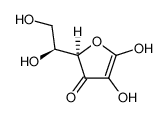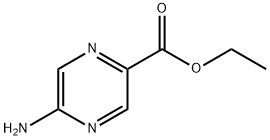How exactly does vitamin C interact with iron at a molecular level to enhance absorption? Are there differences in iron absorption promotion by vitamin C for different types of iron, like heme iron from meat and non - heme iron from plants? Also, do factors such as a person's age, gender, or underlying health conditions affect the ability of vitamin C to help absorb iron? Additionally, what is the optimal amount of vitamin C needed to maximize iron absorption? And does the timing of consuming vitamin C relative to iron - rich foods matter?
Exploration: Can Vitamin C Aid in the Absorption of Iron (a Nutrient)?
Related Encyclopedia
Related Products More >
-
- CNY Request For Quotation
-
- CNY Request For Quotation
-
- CNY Request For Quotation
-
- 86404-04-8
- CNY Request For Quotation
-
- 86404-04-8
- CNY Request For Quotation
-
- 68186-88-9
- CNY Request For Quotation
-
- 68186-88-9
- CNY Request For Quotation
-
- 68186-88-9
- CNY Request For Quotation





 沪ICP备2021018848号-5
沪ICP备2021018848号-5

When it comes to different types of iron, vitamin C is more effective in promoting the absorption of non - heme iron from plants. Heme iron from meat is already in a form that's relatively easy for the body to absorb, so vitamin C has less of an impact on increasing its absorption. Non - heme iron, however, often needs that extra help from vitamin C to be absorbed more efficiently.
A person's age, gender, and underlying health conditions can affect the ability of vitamin C to help absorb iron. For example, infants, children, and pregnant women have higher iron needs and may benefit more from the iron - absorbing boost of vitamin C. Women of childbearing age are also more likely to experience iron deficiency due to menstruation, so vitamin C can be especially helpful for them. In people with certain health conditions like celiac disease or Crohn's disease, which can affect the absorption of nutrients in the gut, the effectiveness of vitamin C in enhancing iron absorption might be reduced.
The optimal amount of vitamin C needed to maximize iron absorption isn't an exact number. But generally, consuming about 25 - 75 milligrams of vitamin C along with an iron - rich meal can significantly increase iron absorption.
The timing of consuming vitamin C relative to iron - rich foods does matter. It's best to consume vitamin C at the same time as iron - rich foods. This way, the vitamin C can immediately start reducing the ferric iron in the food to the more absorbable ferrous form. For example, if you're having a spinach salad (a good source of non - heme iron), having a glass of orange juice (rich in vitamin C) with it can enhance the iron absorption from the spinach. So, overall, understanding these factors can help us make better use of vitamin C to maintain healthy iron levels in the body.
There are indeed differences in how vitamin C promotes the absorption of different types of iron. Heme iron, which is found in animal - based foods like meat, is already in a highly absorbable form, so vitamin C doesn't play as crucial a role in enhancing its absorption. However, for non - heme iron, which is found in plant - based foods and supplements, vitamin C can significantly boost its absorption. Studies have shown that consuming vitamin C - rich foods along with plant - based iron sources can increase iron absorption by up to five - fold.
Factors like a person's age, gender, and underlying health conditions can affect the ability of vitamin C to help absorb iron. For example, infants and young children may have a harder time absorbing iron from plant - based foods, even with vitamin C. Additionally, people with certain health conditions, like inflammatory bowel disease or celiac disease, may also have impaired iron absorption. However, for healthy adults, vitamin C can be a powerful ally in boosting iron absorption from plant - based foods.
As for the optimal amount of vitamin C needed to maximize iron absorption, it's generally recommended to consume around 50 to 100 milligrams of vitamin C at the same time as iron - rich foods. This amount is easily achievable through diet alone, by eating fruits like oranges, strawberries, kiwi, and bell peppers, which are all rich in vitamin C.
The timing of consuming vitamin C relative to iron - rich foods can also make a difference. For the best results, it's best to consume vitamin C - rich foods or a vitamin C supplement at the same meal or snack as iron - rich foods. This allows the vitamin C to interact with the iron in the digestive tract and enhance its absorption. However, even if you don't consume vitamin C and iron - rich foods at exactly the same time, the vitamin C in your diet will still play a role in enhancing overall iron absorption over time.
In summary, vitamin C enhances iron absorption by helping convert iron from its less absorbable forms into more easily absorbed forms. It's particularly important for promoting the absorption of non - heme iron found in plant - based foods. While factors like age, gender, and health conditions can affect iron absorption, consuming around 50 to 100 milligrams of vitamin C at the same time as iron - rich foods can help maximize iron absorption for most healthy adults. And while the timing of consuming vitamin C relative to iron - rich foods can make a difference, it's not crucial as long as you're consuming vitamin C - rich foods regularly as part of a balanced diet.
Now, when it comes to different types of iron, there are indeed differences. Heme iron, which comes from meat, poultry, and fish, is already in a form that's relatively easy for our body to absorb. But vitamin C can still give it a little boost. Non - heme iron, from plant - based sources like beans, spinach, and grains, is a bit trickier for our body to absorb. Here, vitamin C really shines. A good amount of vitamin C can significantly increase the absorption of non - heme iron. For example, if you have a spinach salad (rich in non - heme iron) and add some lemon juice (high in vitamin C), you're helping your body absorb more of that iron.
Factors like a person's age, gender, and health conditions can also play a role. In general, younger people might have a more efficient digestive system, which could affect how well vitamin C works to enhance iron absorption. As we age, our digestive function might decline a bit, and this could potentially impact the process. Gender can also be a factor. Women, especially those who are menstruating, have higher iron needs. Vitamin C can be really important for them to make sure they're getting enough iron from their diet. In terms of health conditions, people with certain digestive disorders, like celiac disease or inflammatory bowel disease, might have a harder time absorbing iron. Vitamin C might still help, but the underlying condition could limit its effectiveness.
The optimal amount of vitamin C for maximizing iron absorption isn't set in stone. But generally, around 50 - 100 milligrams of vitamin C can increase non - heme iron absorption by two - to - four - fold. You can get this amount from a serving of citrus fruits, strawberries, or bell peppers. However, more isn't always better. Extremely high doses of vitamin C might cause side effects like diarrhea.
The timing of consuming vitamin C relative to iron - rich foods does matter. It's best to consume them together. When you eat a meal with iron - rich foods and add a vitamin C - rich food or supplement at the same time, you're giving your body the best chance to use the vitamin C to enhance iron absorption. If you wait too long between eating iron and vitamin C, the opportunity for that interaction to happen in your digestive tract is reduced. So, in short, if you want to get the most out of your iron - rich foods, pair them with some vitamin C - rich options.